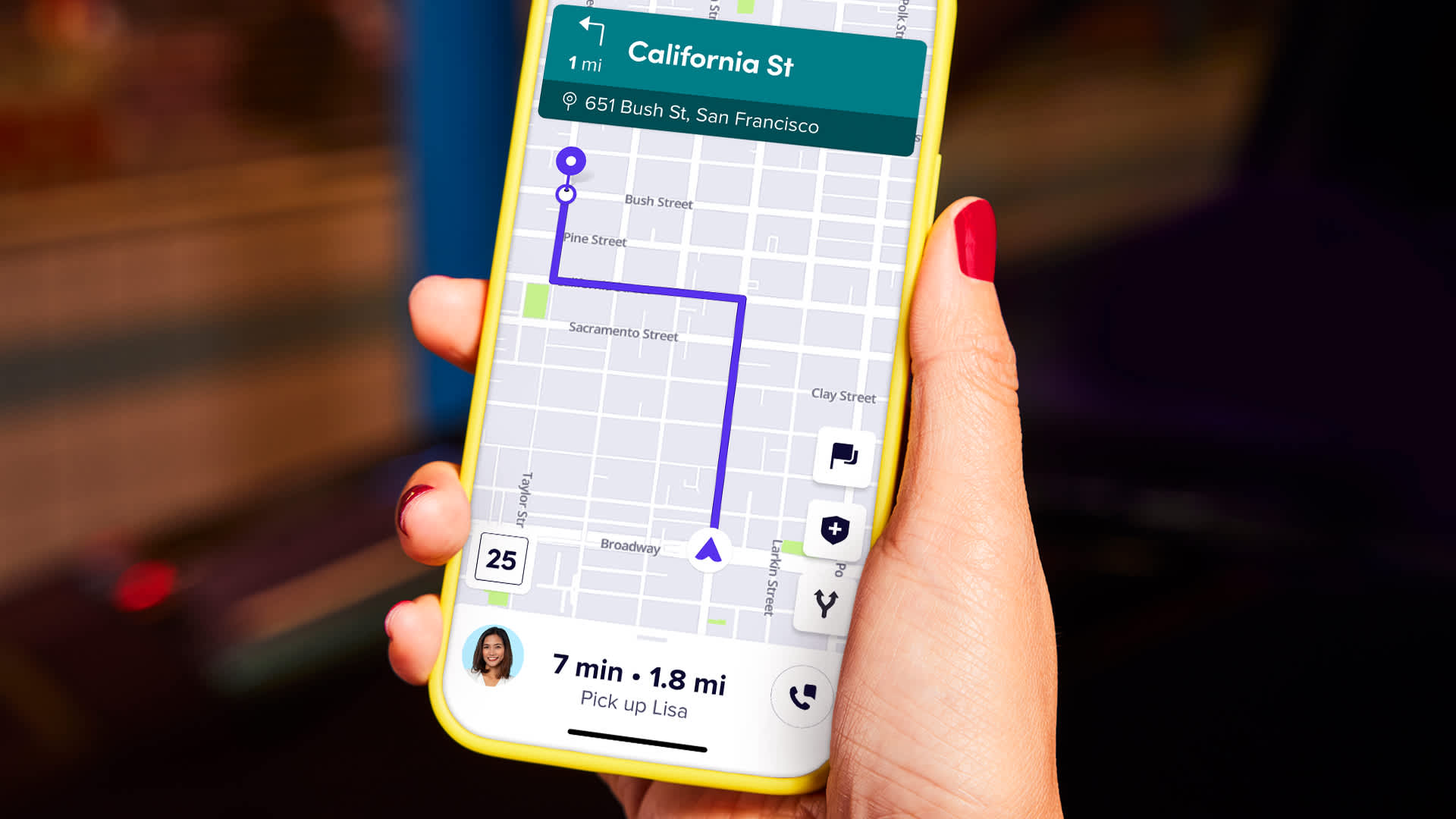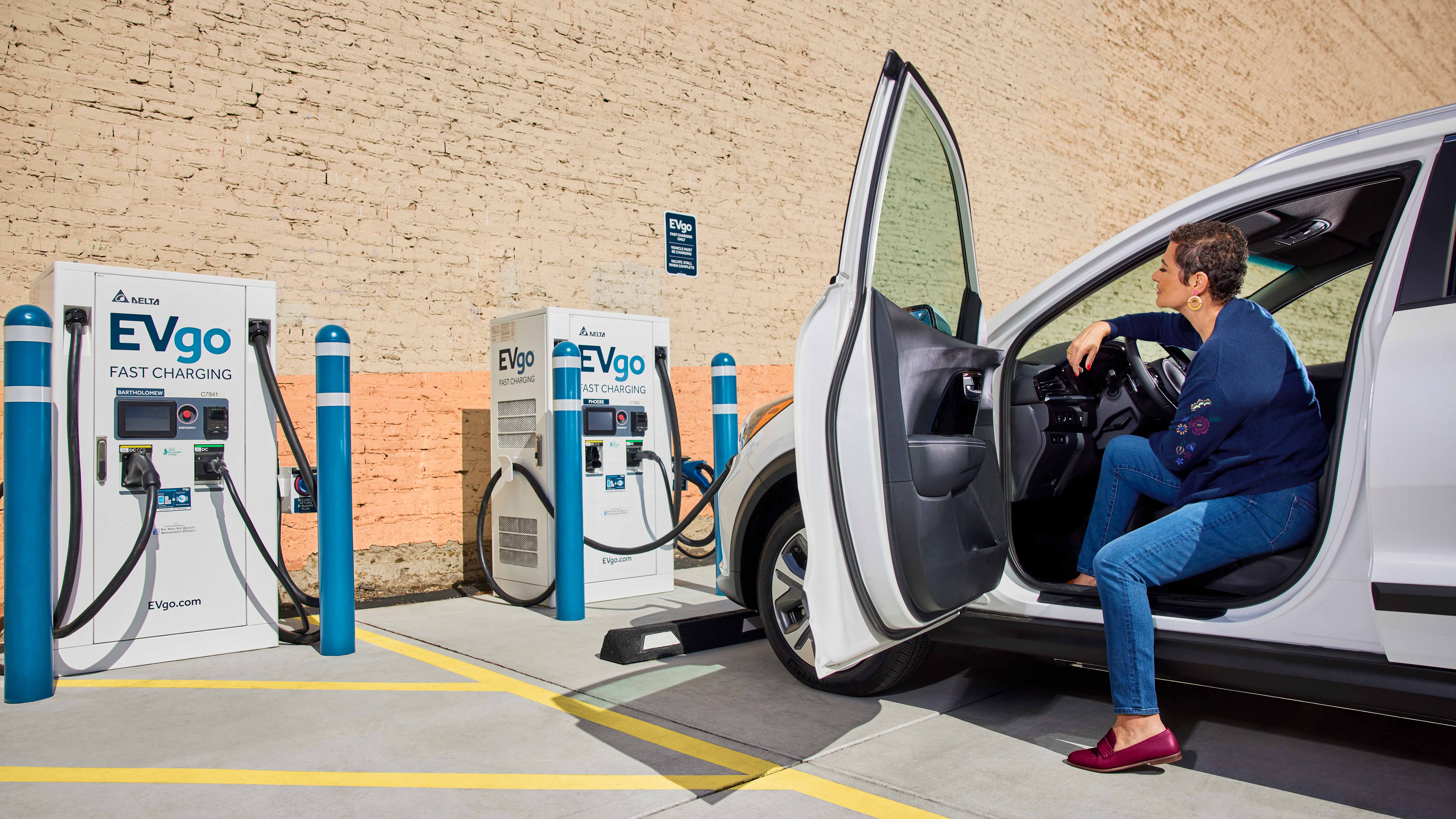
More rideshare drivers than ever are choosing electric vehicles. Indeed, the share of EV miles on the Lyft platform almost tripled between 2022 and 2023. But rideshare presents some unique challenges. Will that battery last long enough to accept your next fare? Is it better to pass up a ride to charge now, or risk not being able to find a charger later? And if time is money, how long should you spend finding the cheapest and most convenient place to charge up?
Lyft wanted to help — but, since it doesn’t own chargers nor drivers’ vehicles, the company had to find creative solutions. Since November 2023, the company’s engineers have been testing out new EV-related changes in the app. Today, as part of its announcement of a broad suite of new features for drivers, the company launched several EV-specific features. Here’s a look under the hood at how they work.
Rides in Range
While most EV drivers with Lyft can drive the entire day on a standard 291-mile battery range, they are more susceptible to “range anxiety” — the concern that a vehicle will not have enough charge to reach its destination. Lyft’s EV product manager, Ciara Chow, consistently hears this concern, particularly from new drivers: “Figuring out whether they had enough range for a ride was a huge mental load. It made them more wary about accepting rides.”
“I won’t do long rides,” says driver Ron Indech, who has five years of experience driving rideshare in Palm Springs. “So if somebody makes a request to go to Los Angeles or to Las Vegas or to San Diego, I just dismiss it.”
Lyft wanted to implement a straightforward solution: Don’t match EV drivers with rides going outside of their range. But Lyft couldn’t know a car’s charge at any given moment. According to Lyft engineering manager Megan Drasnin, “We knew this would be a huge undertaking. We would need to get the battery level from the car in real time and integrate it into the algorithm that matches drivers with riders.”
They found the solution in Smartcar, a vehicle API that can retrieve real-time EV-battery-level data across a majority of EV brands. After drivers opted into sharing this data, Lyft engineers incorporated it into the driver app, as a “Rides in Range” feature: When toggled on, drivers will be matched only with rides that fall within their battery range to complete. As of now, the feature applies a 20-mile buffer on an EV’s battery range to account for variations in driving style and any hiccups along the route. The feature also reminds the driver to “charge after this ride” anytime they take on a ride that would bring them below 20%.
Drivers who have tried the “Rides in Range” feature report that knowing they are going to make it to their destination makes them “feel more secure.” The feature also has the more subtle benefit of reducing a driver’s cognitive burden and decision fatigue. Plus, riders benefit: When matches occur among the subset of drivers who can actually complete the ride, the likelihood that a driver will accept should be higher, adding efficiency to the matching process.
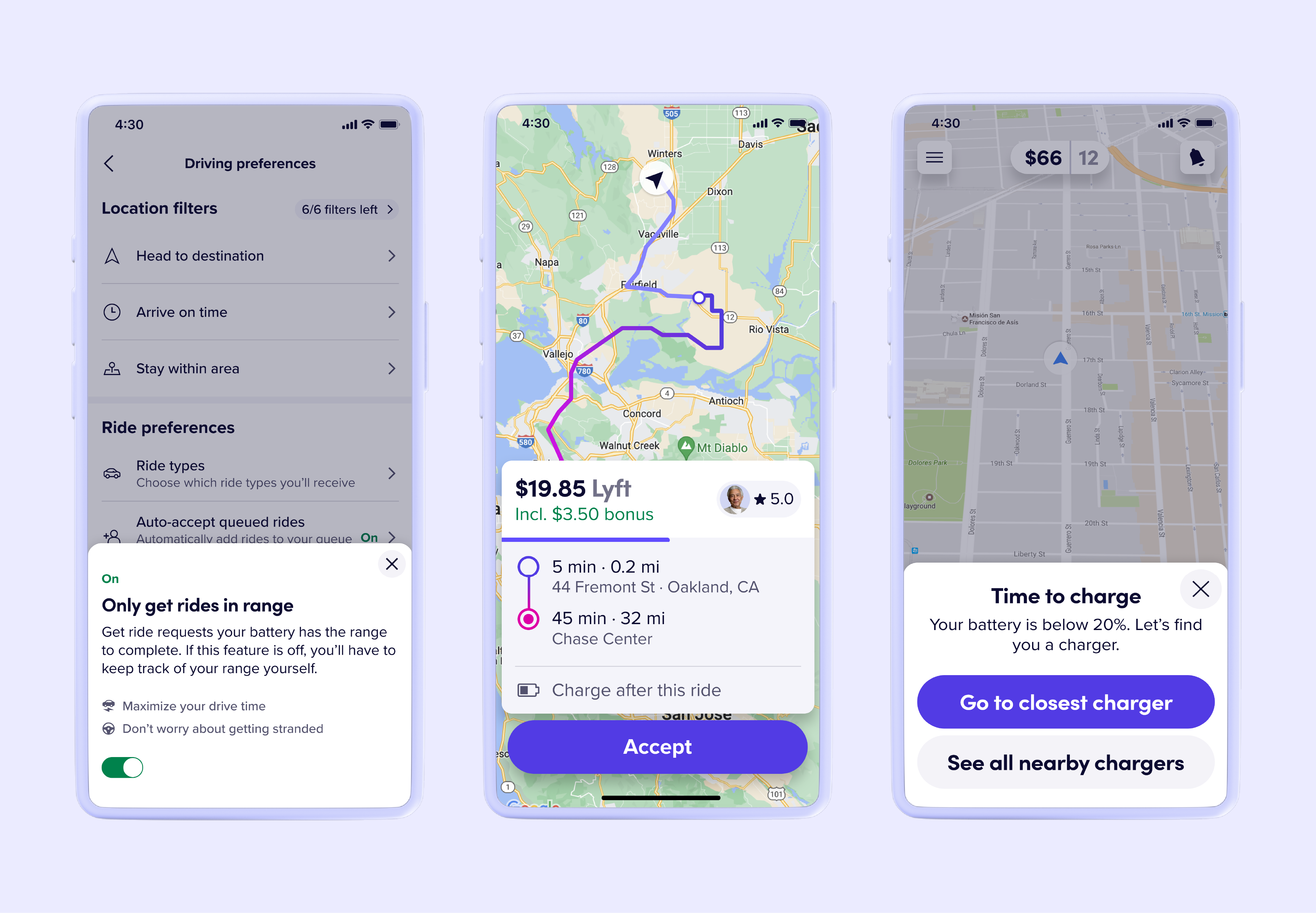
Charging maps
According to Lyft data, approximately 85% of EV rides on the Lyft platform in the U.S. finish within two miles of a public fast charger. But they’re often hard to find and not always available. Different charging networks display such information in their apps, but that still means flipping between a number of different apps to find the most convenient, affordable, and available option. So Lyft engineers went to work putting all that data in one place.
The company has been designing maps to meet the needs of drivers since 2019 when engineers first built their own in-house maps. By taking in data from EVgo and Electrify America, the maps now include a layer for public charging stations that updates in real time to show how many ports are currently available. The maps will soon also incorporate Tesla chargers — and thus cover over 70% of all public fast chargers in the country.
The map also includes station details — like the number of ports, the price, speed of charging, and whether the station has additional amenities, like bathrooms — that are particularly helpful, as drivers aren’t always just optimizing for distance. Patricia Raymond drives rideshare with her Tesla and notes that “people prefer a charging station based on their needs. Proximity to the home, proximity to the grocery store, price, time of day, kids nearby at school. There’s always a reason.” Having all this information tucked a couple clicks away on the Lyft app frees up a driver’s hands — and their time.
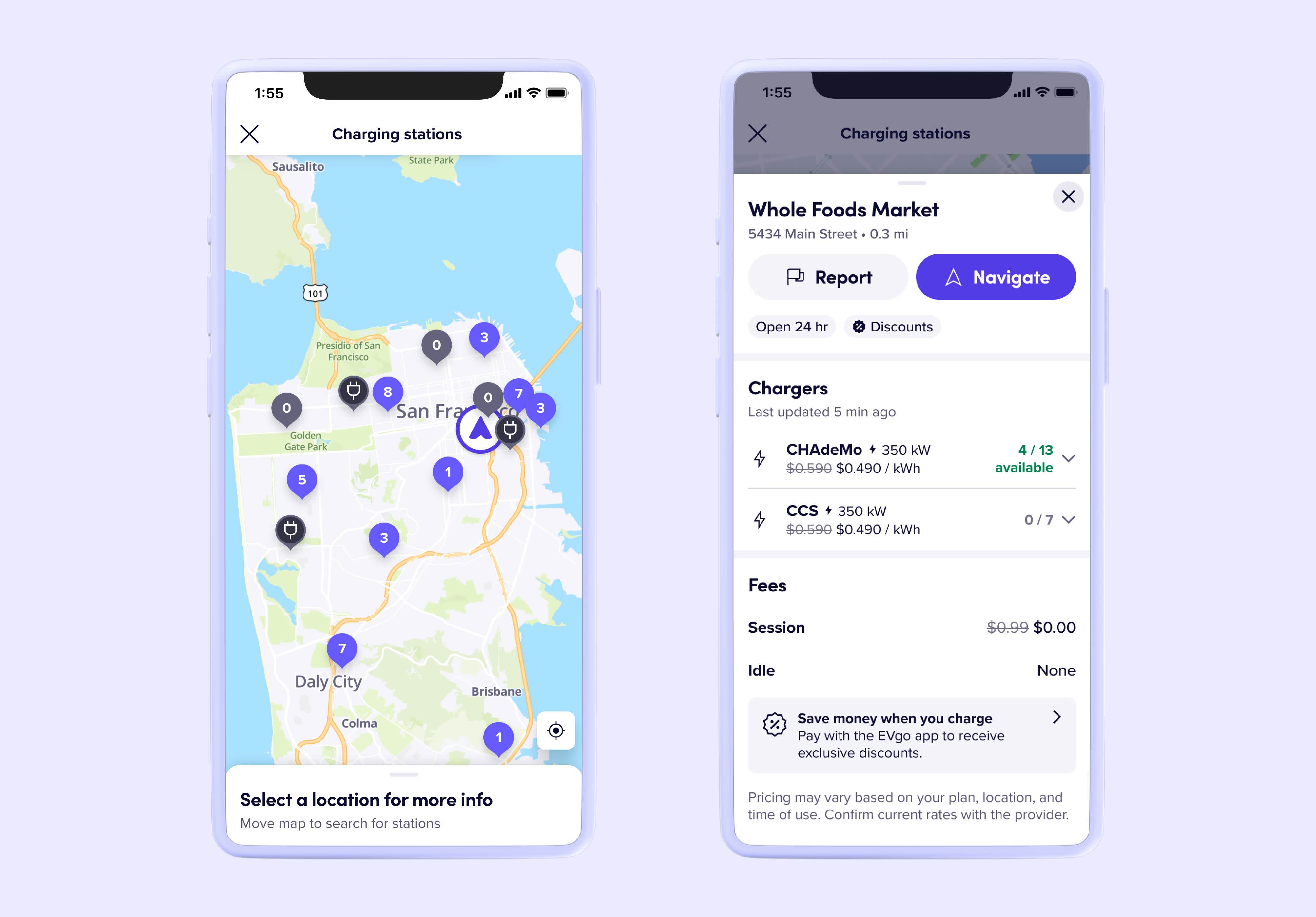
Broken charger reporting
Of course, being able to find a charging station isn’t that helpful when it turns out to be out of service or malfunctioning. And the charging networks don’t always share that information, particularly when the issue is physical –– such as a connector that has been run over by a car. As Eric Bauer, a Milwaulkee-based driver, laments: “It’s still kind of the Wild West for chargers.”
But rideshare drivers tend to know when a charger is out of commission. Chow says that drivers often share advice about where to charge. “They’ll say, ‘Oh, don’t use that charger,’ ” she says. “ ‘It always says it’s working, but it never does.’ ” If the team could collect all that knowledge, they could help solve one of EV drivers’ biggest frustrations. This fall, Lyft launched a reporting system that allows drivers to flag issues in charging stations as they encounter them, making it easier for drivers to avoid them.
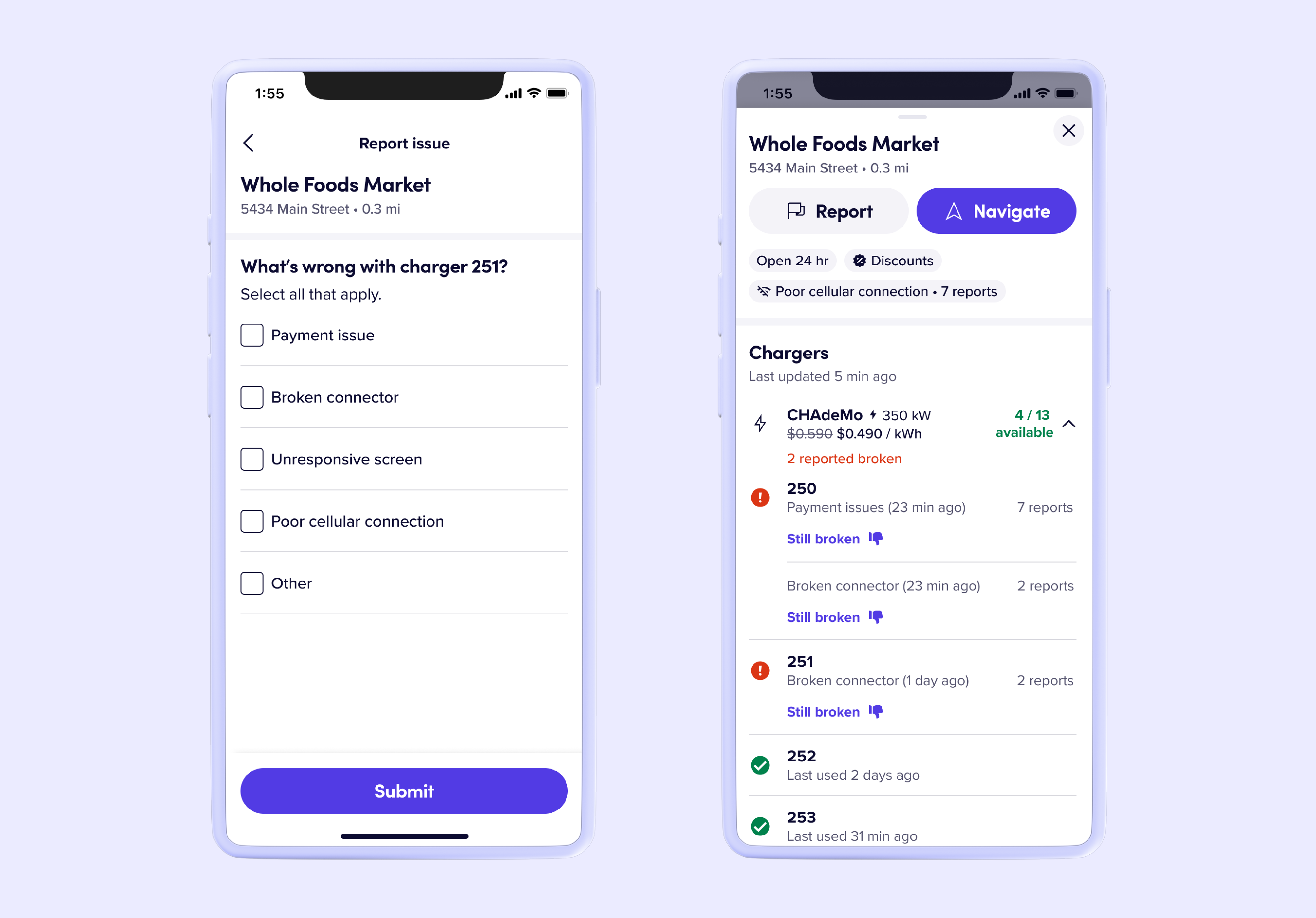
Taken together, these steps aim to make driving an EV not just clean, but even more convenient than driving a gas car. “That way, all EV drivers can focus on what matters most,” says Drasnin. “Getting people where they want to go — quickly and cleanly.”

